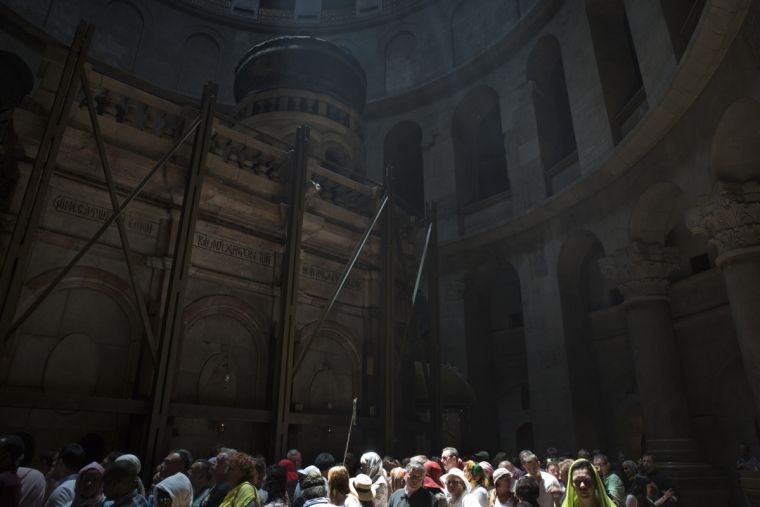Uncovered Tomb of Jesus, Christianity's Holiest Site, Turns Out New Revelations

The tomb where Jesus was laid to rest before His resurrection has been uncovered, with researchers marvelling at new revelations about the holiest site in Christendom.
In a suspense-filled moment, workers—under the watchful eye of National Geographic cameras—carefully removed the marble slabs that lay over the tomb since 1555 A.D.
After examining the tomb for hours, the team of researchers announced their findings.
Their preliminary findings appear to confirm that portions of the tomb are still present today, having survived centuries of damage, destruction, and reconstruction of the surrounding Church of the Holy Sepulchre in Jerusalem's Old City.
The tomb consists of a limestone shelf or burial bed that was chiselled from the wall of a cave. Since at least the year 1555, and most likely centuries earlier, the burial bed has been covered in marble cladding, allegedly to prevent pilgrims from removing bits of the original rock as souvenirs, according to National Geographic.
The first marble cover was first removed on the night of Oct. 26, with the researchers finding a layer of fill material underneath.
The researchers continued working for 60 hours, exposing another marble slab with a cross carved into its surface on the night of Oct. 28.
The researchers eventually found Jesus' original limestone burial bed that was described as "intact."
"I'm absolutely amazed. My knees are shaking a little bit because I wasn't expecting this," said National Geographic archaeologist-in-residence Fredrik Hiebert. "We can't say 100 percent, but it appears to be visible proof that the location of the tomb has not shifted through time, something that scientists and historians have wondered for decades."
The researchers also confirmed the existence of the original limestone cave walls within the 18th-century Edicule, or shrine, which encloses the tomb.
"This is the Holy Rock that has been revered for centuries, but only now can actually be seen," said Chief Scientific Supervisor Professor Antonia Moropoulou, who is directing the conservation and restoration of the Edicule.
Moropoulou earlier told CBN News what they planned to do.
"We will remove the marble slabs, the stone slabs. We will inject grout to homogenise the complex structure, which is the Holy Rock," Moropoulou explained. "That means that we develop a unified structure that all the layers will behave structurally as one and upon this after repairing with new compatible and performing mortars and concrete, we will readjust the stone slabs with titanium bolts."
Moropoulou and the other people working on the project fully understand the immensity and significance of their work.
"It is a collective effort but each one of us in front of the holy tomb feels the values of the holy tomb and the holy tomb is the most alive place in the world," Moropoulou explained. "It gives the message of resurrection."











